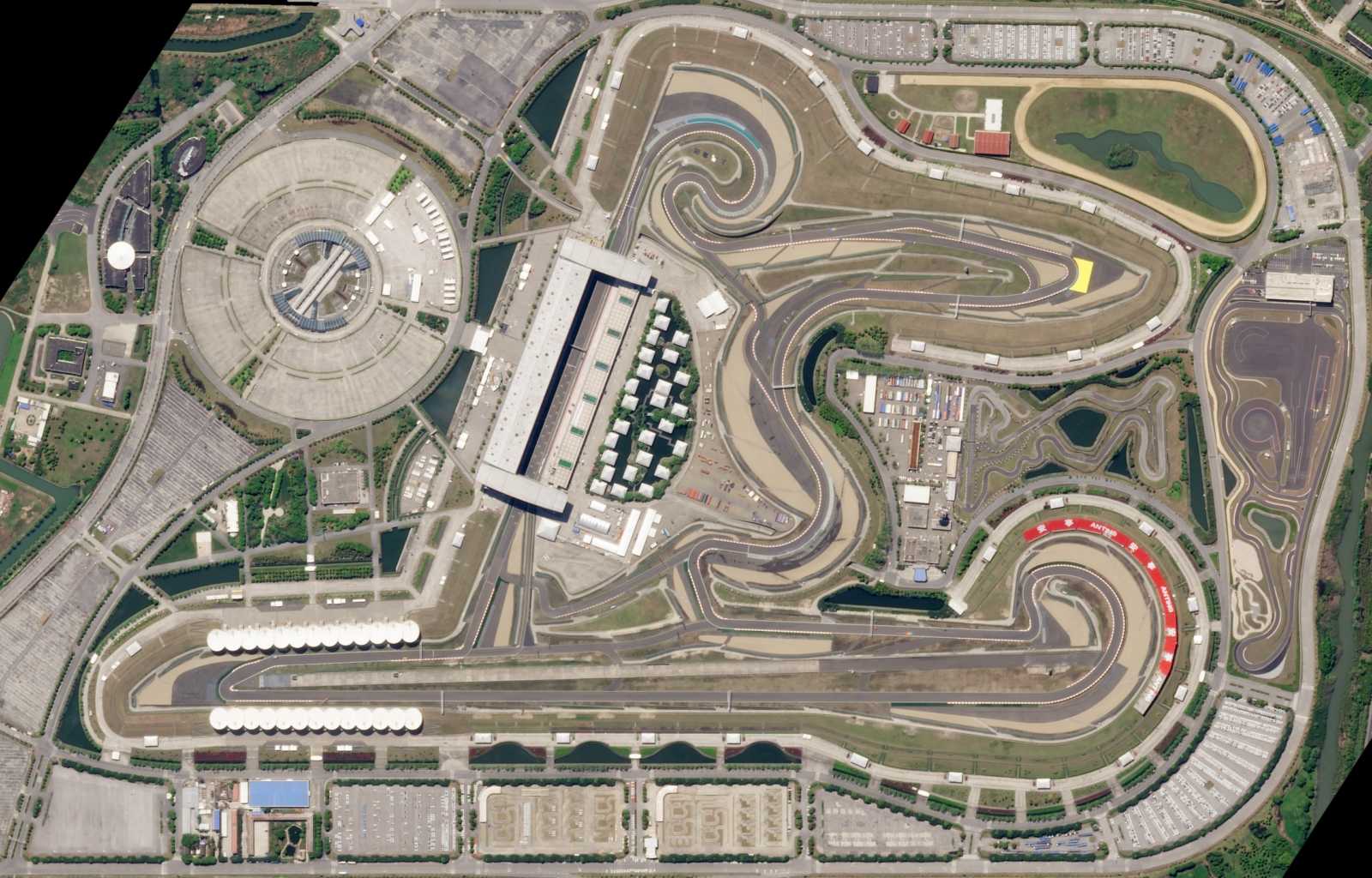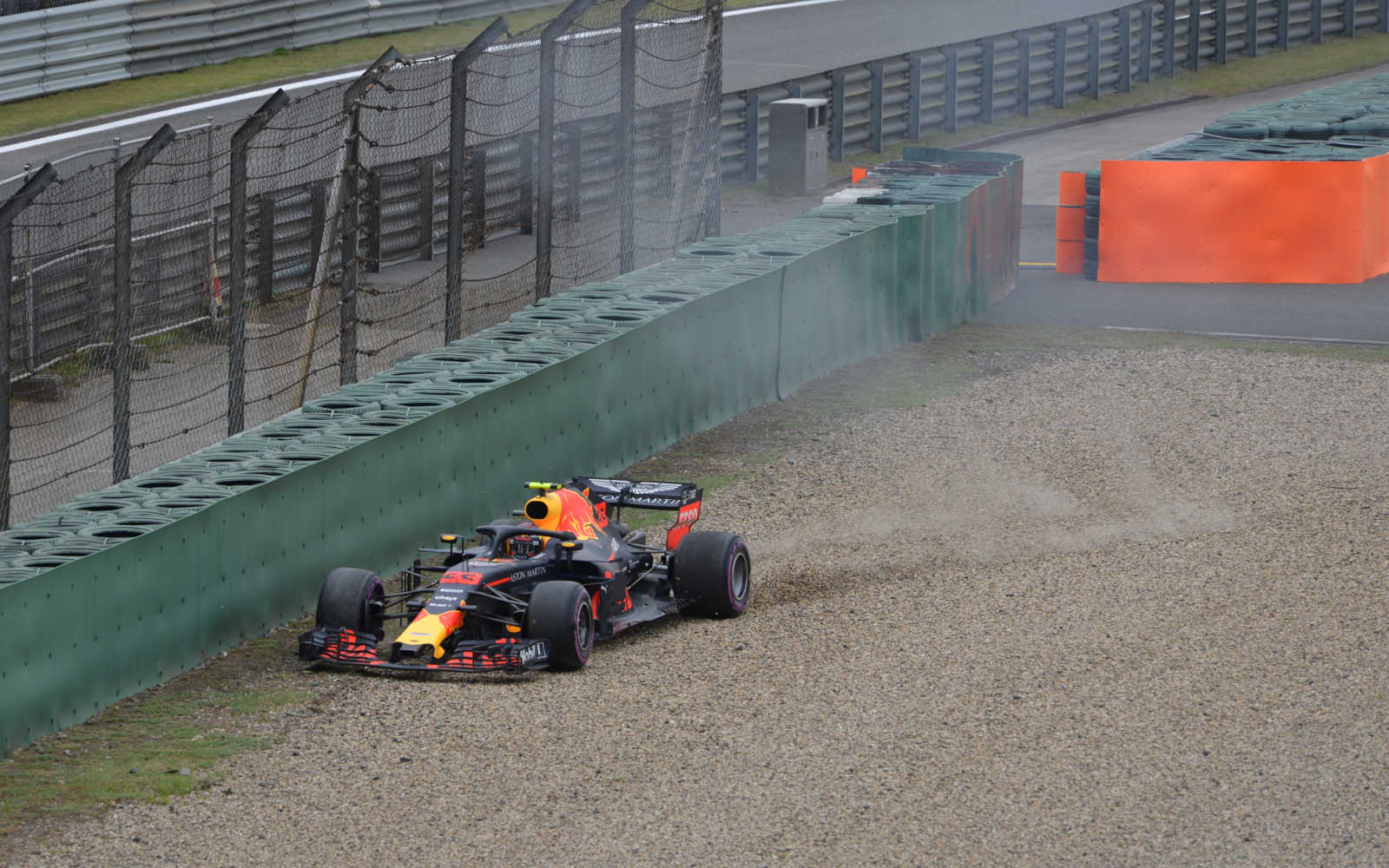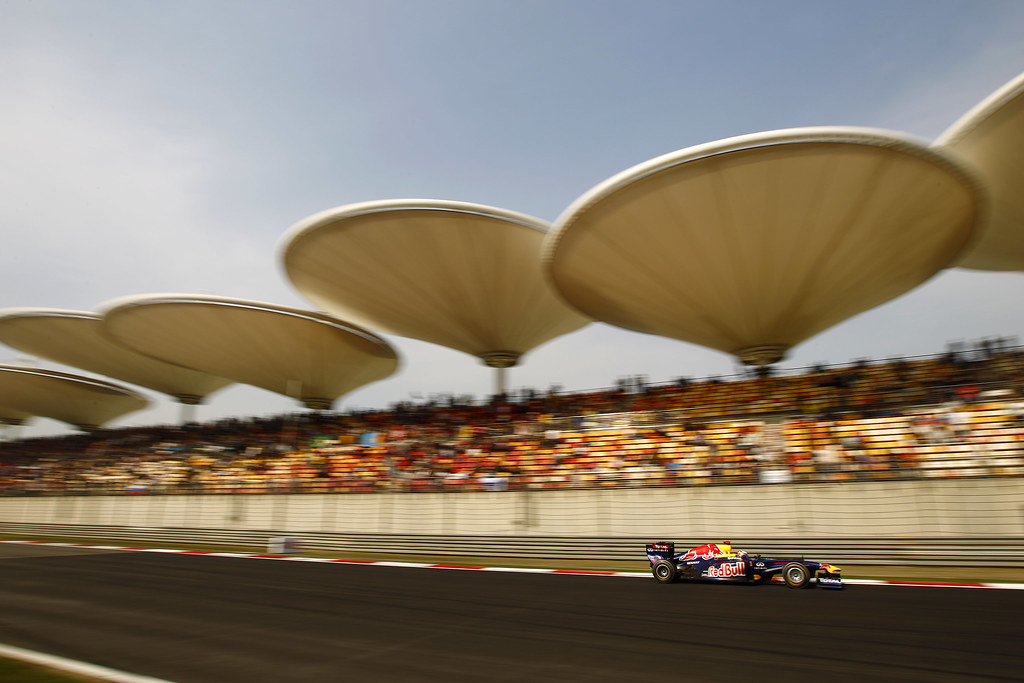Imagine, the Chinese Grand Prix debuted almost twenty years ago, and its venue, Shanghai track, became a worthy skills test for the drivers. Since 2004, it has kept the original configuration, while the complex layout and demanding corners are hard-fought enough that racers ideally need extra time to prepare for the event. As Formula 1 heads to Chinese Grand Prix, let’s delve into the unique challenges of the Shanghai Circuit that make it unlike any other on Formula 1.

How Complex Is The Layout of The Shanghai Circuit?
In short, it is complex enough for even an experienced driver to retire from the race due to a tiny mistake.
The Shanghai International Circuit was designed by Herman Tilke and gained 16 turns, including 14 corners and 2 straights, completing the 5.451 km. But take a closer look at the layout, and you’ll find these are just the bare numbers. In reality, it’s a mix of fast and slow corners, direction-changing turns, sharp angles, and circular lines.
The Unique Characteristics Of The Sectors
Therefore, each sector has its own unique characteristics. The first one looks like a series of smooth lines, where the drivers have to slow down the car step by step, avoiding cutting the brakes to prevent the car from stopping. It is all about soft braking and gradual acceleration that defines an average speed.
I think the second sector is the most exciting part of the track. Here, the drivers race at high speeds with direction-changing corners. The overtaking opportunities add to the pressure. So, the main rule is to keep the line of the track so as not to lose control of your delta. It’s also the stage where the riders are exposed to the highest G-forces.
However, if the second sector keeps the smooth lines, the third sector is another story. After three turns, there is the longest straight of 1.2 kilometers, which lets the drivers enjoy the real power of the F1 car, which you can find out in the speed trap before turn 14. However, the heavy stop is on the way, as it ends with a series of sharp corners.
The layout of the Shanghai International Circuit doesn’t have one overall pattern. It’s a mix of different shapes at different speeds, which requires mathematical accuracy from the driver.
And if there is a better comparison, the roller coaster is a worthy one due to the challenging corners.
Shanghai Circuit And Its Demanding Corners
Beyond the race battles and weather factors, successfully navigating the corners of the Shanghai International Circuit requires the driver to listen to his car’s behavior. But as soon as Formula 1 is about high tension. And this is not so easy. That is why a cool head and racing skills are a must.
Every Shanghai corner is specific, but exactly Turns 1, 7, and 14 are those capricious ones.
The capricious Turns 1, 7 and 14
So, after starting/finishing straight, Turn 1 launches the chain of consecutive downshifting right-hander turns, which drivers pass on a 150 km/h average if everything is under control. Turn 1 requires drivers to balance speed and hold the track line. If everything is done right, the quick entry guarantees the advantage at Turn 3.
Avoiding mistakes is like the motto of the high-speed chicane that kicks off Turn 7. Here, the wave of high and constant G-forces begins to be experienced. Passing the sector at more than 150 km/h, the drivers have to keep a delicate touch on the throttle, which still depends on their accuracy. It is a breathtaking point of the track.
Keep going. Turn 14, a long, sweeping right-hander, is the hard braking zone, meaning deceleration from 350 to 50 km/h. It’s the car’s brakes and the driver’s ability test. They need to maintain control. Competently passing gives the advantage before the last chance at Turn 16, but failing to do so means losing position.
Many experts point to Turn 16 as the decisive turn before the main straight, but I think there are fewer decisive opportunities to take the lead when the speed difference between the F1 cars is high. So it is mentally challenging as braking early and late can spoil the pace, but you can say the same about any corner of the track.

Technical Challenges Are Just The Result
The technical challenges drivers face at the Shanghai International Circuit come from the track’s complex layout.
Passing through long sweeping turns requires the car’s engine to have enough power to withstand sustained loads.
For high performance, the transmission must function correctly due to the constant shifting and holding of gears.
Heavy braking is always a test for its system and the tires, while the overall loads are bad for the car’s suspension. In Shanghai, however, it is on a different level. For example, in the 2010 Chinese Grand Prix, Sebastien Buem lost the wheels because the suspension couldn’t take it.
As for the tires, the Circuit’s surface is very abrasive.
Without additional time to warm up, while soft is gone fast, it is better to opt for one-stop, while the medium has recommended itself as the best compound in tire strategy.
So balance is the key, but it is also the result of the right car’s settings, which require extra time drivers do not have. What does happen if something goes wrong technically? You can recall Alex Albon’s catching the car in the free practice session of the 2019 Chinese Grand Prix, which resulted in his crash.

The Physical Demands At Chinese Grand Prix
But let’s talk about the drivers’ physical and mental demands at the Shanghai International Circuit. It’s also about challenges but not climatic conditions or high loads that racers get used to. In a way, it is a mental trap.
The track provides the drivers with a lot of possibilities to overtake as well as to pass corners at full throttle. However, it is what the illusion is. Racing at the maximum demands from racers’ mathematical accuracy because leaving the track’s line delta can be crucial.
Think, Lewis Hamilton lost his championship title in 2007 due to going to a gravel trap on the way to a pitstop at the Chiese Grand Prix. Small mistake – huge aftermath.
Therefore, it is a common opinion that the Chinese GP can be won by the tempest and most skillful driver, even without the fastest car. Sounds like the best traditions of Formula 1, right?
Takeaways
Thus, the Shanghai International Circuit differs from other Tilke’s creations. Its layout is a challenging combination, from circle curves to sharp turns. Altogether, it is a personal call for each driver for their bravery, accuracy, car’s feeling, and cold mind approach.
And it sets race track in China apart from any other else. Everything is possible – that is the best synonymous for the track.
How do you think Shanghai International Circuit deserves to be iconic alongside Imola, Silverstone, and Suzuka? Share your thoughts or experiences in the comments below.
References
- Wikipedia ‘Shanghai International Circuit‘ https://en.wikipedia.org/wiki/Shanghai_International_Circuit
- Formula 1, ‘FORMULA 1 LENOVO CHINESE GRAND PRIX 2024‘ (2024) https://www.formula1.com/en/racing/2024/China/Circuit.html
- Planet F1, Henry Valantine ‘Chinese GP track guide: Refresh your memory of a lap of Shanghai five years on from last visit.’ (April 14, 2024) https://www.planetf1.com/news/chinese-gp-track-guide-shanghai-international-circuit-lap


Leave a Reply